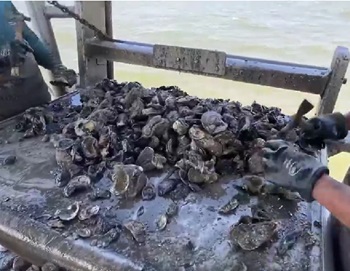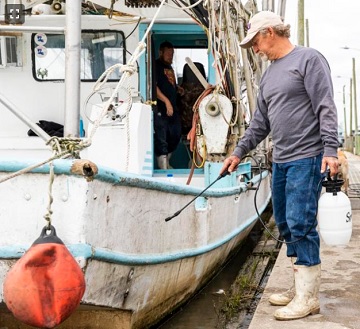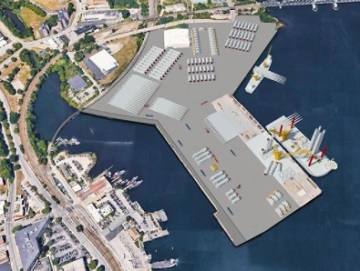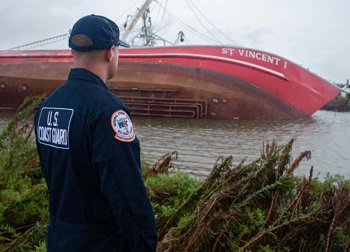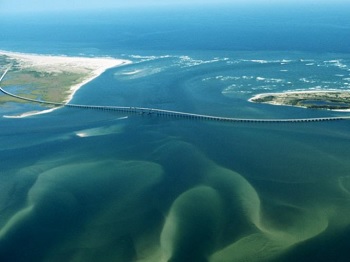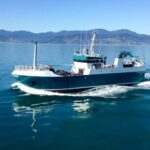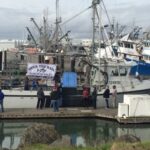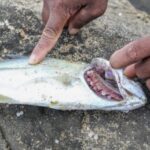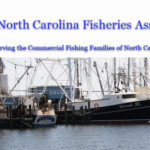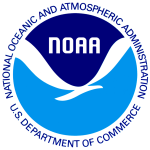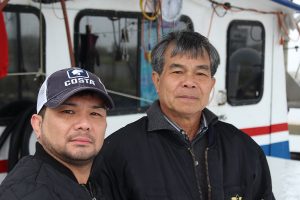Tag Archives: U.S. Army Corps of Engineers
More than $30 million & 300 jobs lost during 2019 spillway opening, MSU study finds
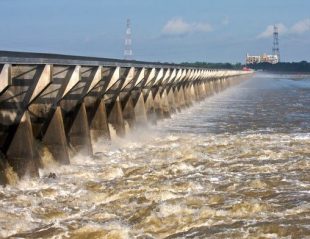 The 2019 opening of the Bonnet Carré Spillway cost the Mississippi Coast hundreds of jobs and millions of dollars, a scenario likely to repeat itself and endanger a seafood industry that has been vital to the economy and culture, a study from Mississippi State University concludes. The seafood industry also has declined because of competition from imports, the study noted. Interviews showed many fishermen, including those who specialize in shrimp and oysters, are selling their boats and leaving an industry that supported their families for generations. Video, more, >>CLICK TO READ<< 15:14
The 2019 opening of the Bonnet Carré Spillway cost the Mississippi Coast hundreds of jobs and millions of dollars, a scenario likely to repeat itself and endanger a seafood industry that has been vital to the economy and culture, a study from Mississippi State University concludes. The seafood industry also has declined because of competition from imports, the study noted. Interviews showed many fishermen, including those who specialize in shrimp and oysters, are selling their boats and leaving an industry that supported their families for generations. Video, more, >>CLICK TO READ<< 15:14
Breakwaters have protected Galilee from storms for over a century. Now repairs are needed
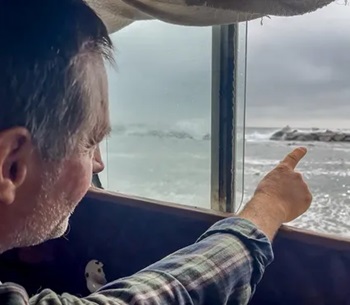 On a recent overcast morning fisherman Mike Marchetti boards his vessel Mister G, a 50-foot lobster boat converted into a scalloper, and gently pulls out of the Port of Galilee’s UU dock. The slate water reflects the sullen sky, but Mister G chugs along pleasantly past the docks, through the breachway and out to the Point Judith Harbor of Refuge. That name – “Harbor of Refuge” – is at risk of becoming a misnomer to Marchetti. The U.S. Army Corps of Engineers created the Point Judith Harbor of Refuge in the early 20th century when it constructed a series of breakwaters to protect the port from hazardous sea conditions. These days the sea is winning. As Mister G nears the main breakwater – a v-shaped 6,970-foot-long wall of massive boulders – Marchetti looks out the starboard window and points at wide gaps in the breakwater. Photos, more, >>CLICK TO READ<< 07:45
On a recent overcast morning fisherman Mike Marchetti boards his vessel Mister G, a 50-foot lobster boat converted into a scalloper, and gently pulls out of the Port of Galilee’s UU dock. The slate water reflects the sullen sky, but Mister G chugs along pleasantly past the docks, through the breachway and out to the Point Judith Harbor of Refuge. That name – “Harbor of Refuge” – is at risk of becoming a misnomer to Marchetti. The U.S. Army Corps of Engineers created the Point Judith Harbor of Refuge in the early 20th century when it constructed a series of breakwaters to protect the port from hazardous sea conditions. These days the sea is winning. As Mister G nears the main breakwater – a v-shaped 6,970-foot-long wall of massive boulders – Marchetti looks out the starboard window and points at wide gaps in the breakwater. Photos, more, >>CLICK TO READ<< 07:45
Do these Georgia waterways support “significant” commercial activity? A federal agency says no
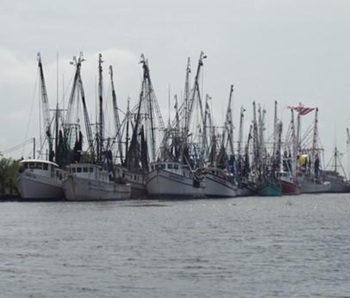 The U.S. Army Corps of Engineers says the agency hasn’t dredged nine Georgia waterways in decades – and there hasn’t been much impact as a result. So they’re considering asking Congress to de-authorize them from federal maintenance. But Georgia seafood harvesters and others say that’s not true. They argue that there’s plenty of commercial activity on Georgia’s smaller coastal waterways to justify keeping them authorized for future dredging. Charlie Phillips of Townsend, in northern McIntosh County, owns two seafood harvesting businesses, Phillips Seafood and Sapelo Sea Farms. “It’s going to need to be dredged sooner or later,” he said, noting that some areas on the Sapelo River already are troublesome for some boats at low tide. more, >>CLICK TO READ<< 08:41
The U.S. Army Corps of Engineers says the agency hasn’t dredged nine Georgia waterways in decades – and there hasn’t been much impact as a result. So they’re considering asking Congress to de-authorize them from federal maintenance. But Georgia seafood harvesters and others say that’s not true. They argue that there’s plenty of commercial activity on Georgia’s smaller coastal waterways to justify keeping them authorized for future dredging. Charlie Phillips of Townsend, in northern McIntosh County, owns two seafood harvesting businesses, Phillips Seafood and Sapelo Sea Farms. “It’s going to need to be dredged sooner or later,” he said, noting that some areas on the Sapelo River already are troublesome for some boats at low tide. more, >>CLICK TO READ<< 08:41
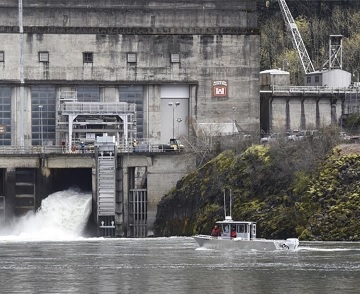
Sea lions threaten Northwest’s salmon – Pinnipeds eating thousands of at-risk fish in Columbia River
Decadeslong efforts by state and tribal agencies have slowly curbed sea lion populations in the region, yet officials still consider the pinnipeds a threat to at-risk salmon populations in the Columbia River. Between August 2021 and May 2022, officials estimate, more than 7,000 fish in the Bonneville Dam tailrace were killed by Columbia River sea lions, according to the Portland U.S. Army Corps of Engineers’ 2022 predation report. This totals about 12.4% of the salmon run accounted for during the agency’s observation period. Dozens of sea lions congregate at the dam in the fall, winter and spring. They feast on chinook, steelhead and coho salmon, as well as sturgeon and other fish. Spring chinook salmon were disproportionately affected, accounting for roughly 4,400 of the 7,000 fish killed. >click to read< 07:55
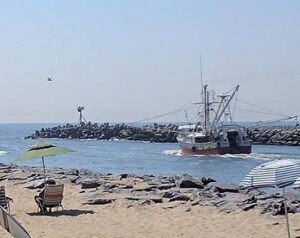
Long awaited dredging of the Manasquan Inlet in New Jersey is finally taking place
There is news all mayors and towns along the coastal towns from the southern shore end of Monmouth County and from the northern barrier island communities in Ocean County have longed to hear: that dredging will commence in the Manasquan Inlet. An announcement was made on Monday afternoon by U.S. Congressman Chris Smith (R – Monmouth/Ocean) that the U.S. Army Corps of Engineers head to the Manasquan Inlet as early as this week to commence a massive dredging operation which will help marine traffic and beaches. The dredging project will be split between the Manasquan Inlet and Shark River Inlet with the ladder getting a primary focus from the Army Corps of Engineers. >click to read< 12:38
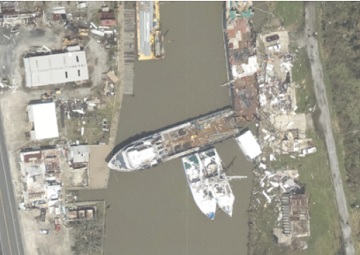
Hurricane Ida: Dozens of Groundings and Sinkings Block Louisiana’s Inland Waterways
Thursday, the U.S. Coast Guard released an update on the full extent of the impact of Hurricane Ida in the vicinity of Bayou Lafourche, the working waterway that leads inland from Port Fourchon. The area was right in the path of the hurricane’s eye, and while Port Fourchon has reopened, navigation remains closed on Bayou Lafourche because of dozens of sunken and grounded vessels.,, So far, 25 vessels requiring salvage and removal – fishing vessels, crew boats and OSVs – have been found in the Bayou Lafourche channel. 30 more submerged targets have been identified in the Houma Navigation Canal, including 15 that have recently been cleared or removed. photos, >click to read< 09:51

Biden-Harris Administration Approves First Major Offshore Wind Project in U.S. Waters
Today’s Record of Decision (ROD) grants Vineyard Wind final federal approval to install 84 or fewer turbines off Massachusetts as part of an 800-megawatt offshore wind energy facility. The project is expected to create 3,600 area jobs and will power up to 400,000 homes. Turbines will be installed in an east-west orientation, and all the turbines will have a minimum spacing of 1 nautical mile between them in the north-south and east-west directions, consistent with the U.S. Coast Guard recommendations in the Final Massachusetts and Rhode Island Port Access Route Study. >click to read< 15:05

Relief and disappointment: Bristol Bay reacts to Army Corps of Engineers Pebble permit denial
Pebble Mine has been stopped, likely for good. The debate around the mine has consumed Bristol Bay for more than a decade. Now the people who live here are coming to terms with the news. “I was ecstatic. I was elated. I was so happy to hear that it was finally over,” said Billy Trefon, Jr. from Nondalton,,, But for those who backed the project, the decision comes as a harsh blow. Sue Anelon works for the Iliamna Development Corporation. Iliamna is another community close to where the mine would have been. Anelon says the area is economically depressed. She sees the Army Corps’ denial as a bad decision for the state as well as the Lake Iliamna region. “I’m very worried right now, because there’s a lot of people without jobs — they’re depending on the government,” she said. >click to read< 11:31
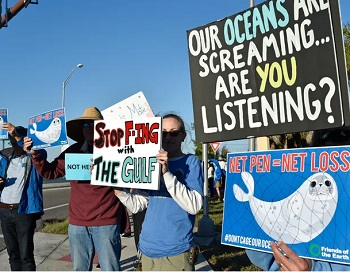
Opposition mounts against proposed offshore fish farm off the coast of Sarasota
Because the U.S. Army Corps of Engineers will not hold a public hearing on the construction of a controversial fin fish farm 45 miles off the coast of Sarasota, opponents took it upon themselves to be heard. Opponents said the proposed offshore fish farm demonstration pen by a Hawaii-based company, the first such project in the Gulf of Mexico, would create pollution in the form of fish waste, spread diseases to wild fish populations and increase competition with fishing companies that depend on wild catches. >click to read< Floating fish farm in Gulf proposed southwest of Sarasota -The permit is to discharge “industrial wastewater” from “a marine net-pen aquaculture facility.” >click to read< 09:07

Early release of Pebble Mine Final EIS triggers barrage of criticism
Thursday a wide array of Alaska Native, commercial fishing, and sportfishing groups issued statements criticizing the U.S. Army Corps of Engineers’ Final Environmental Impact Statement for the proposed Pebble Mine after copies of the document were delivered to interested parties via USPS a day before its publication in the Federal Register. The Final EIS is not a decision on whether the Pebble Partnership will receive the permits it needs to move forward with the mine, but rather it is a scientific document the Army Corps and U.S. Coast Guard will use to make permitting decisions. >click to read< 17:16

Kingfish Zeeland seeks state permit to draw and discharge seawater for $110M fish farm proposed in Jonesport
Kingfish Zeeland, which has an agreement to develop a 94-acre site on Dun Garvan Road, east of central Jonesport on Route 187, needs approval from the state Department of Environmental Protection to draw and discharge seawater between the land-based plant and Chandler Bay. The company says it plans to filter and cool the water that is discharged into the bay to make sure it is clean and that it does not affect the water temperature in the bay, where many local lobstermen set their traps.,, Kingfish officials said Tuesday that the discharge permit will be “one of the most critical permits” for the project. The company also is expected to apply for permits from the U.S. Army Corps of Engineers and from the Jonesport planning board, which it will need to get prior to starting construction, possibly in 2021. >click to read< 09:48

New analysis shows seismic risks related to Pebble Mine
New analysis commissioned by Bristol Bay fishermen contends that plans for the Pebble mine project and environmental review do not adequately account for seismic risks on the proposed mine site, putting the fishery and regional communities and cultures as risk for devastation. With the U.S Army Corps of Engineers expected to release its record of decision on a critical permit application for the mine in mid-July, concerns remain with fishermen and others opposed to the mine abutting the Bristol Bay watershed over seismic and other risks outlined in the report produced by Lynker Technologies, in Boulder, Colo. >click to read< 18:06

Fishermen concerned over Pebble employee appointed to Board of Fisheries
While communities and fishermen in Bristol Bay are facing an immediate challenge in deciding if and how to hold the $300 million salmon fishery in a few weeks, an appointment to the Board of Fisheries is adding to the stress felt by many in the region.,, Among the governor’s appointments is Abe Williams, who is an employee of the Pebble Partnership,,, Williams was born and raised in Naknek, currently lives in Anchorage, and is a fourth-generation Bristol Bay fisherman. However, his position on Pebble Mine has bothered both commercial and sport fishermen in Bristol Bay. Williams is currently the Director of Regional Affairs for the Pebble Partnership. >click to read< 12:14
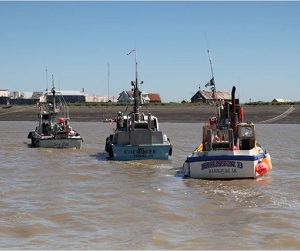
Pebble mine opponents say process is being rushed, groups to hold town hall Tuesday night
Opponents of the proposed Pebble Mine are in Juneau this week to meet with lawmakers and raise opposition to the construction of a mine 100 miles north of Bristol Bay. The project, which has been a source of controversy for years, is currently undergoing an environmental review process by the U.S. Army Corps of Engineers.,, Commercial Fishermen for Bristol Bay, United Tribes of Bristol Bay and other anti-Pebble Mine groups will hold a town hall event Tuesday night at the NEA-Alaska building at 201 Main St. at 5 p.m >click to read< 08:49
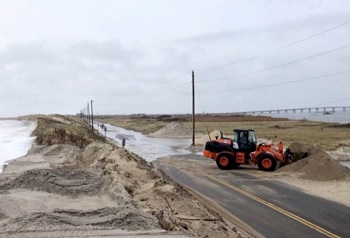
Feds answer lawmakers’ calls to fast-track replenishment of Dune Road
Army Corps of Engineers will begin seeking bids Wednesday for a project to replenish a severely eroded beach along Dune Road in Hampton Bays after lawmakers pushed for the federal agency to fast-track the work. The barrier island has sustained several washovers since October in the area near the Shinnecock Commercial Fishing Dock, the state’s second-largest fishing port, putting millions of dollars’ worth of infrastructure in jeopardy. >click to read< 16:04
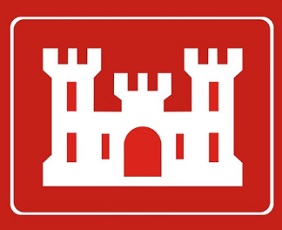
Record of decision on Pebble delayed to autumn 2020
A final environmental impact statement that will determine the future of a proposed copper, gold and molybdenum mine abutting the Bristol Bay watershed in Southwest Alaska has now been delayed until the summer of 2020. “The delay is caused by us deciding that we needed more time to refine our analysis, and to finalize the respond to the concerns raised through the public comment period,” said Sheila Newman, deputy chief of the regulatory division of the Corps. The final EIS was previously anticipated no later than the beginning of March. >click to read< 09:19

Gulf Coast leaders form coalition to protect Mississippi Sound after devastating spillway openings
The marine life in the Mississippi Sound endured a tumultuous spring and summer this year due to freshwater from the Mississippi River flowing in at an unprecedented rate. Freshwater entered the Sound through the Bonnet Carré Spillway, a structure in Louisiana that releases water from the Mississippi River to prevent flooding in New Orleans. Never before had the spillway been opened in consecutive years, nor twice in one year; the U.S. Army Corps of Engineers, which operates the gates, broke both those records this year after a historic wet season across the river’s basin. >click to read< 11:38
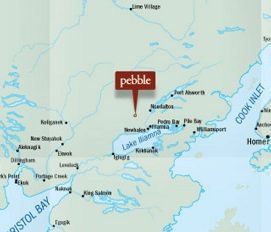
Sen. Murkowski is right: The Army Corps needs to bring science back to Pebble permitting
“If a mine cannot stand on its own without negative impact to the fisheries resource, then that mine should not be permitted.” – Sen. Lisa Murkowski, Sept. 18, 2019. That statement, delivered during Bristol Bay Native Corporation’s annual salmon celebration in Washington, D.C., quickly travelled from the U.S. Capitol all the way back to Bristol Bay, where many of our organizations have been working to expose the U.S. Army Corps of Engineers inadequate environmental review process for Pebble. >click to read< 10:40

Pebble project permit application changes spark outrage
A decision by the U.S. Army Corps of Engineers to consider without additional public input recent changes in a Clean Water Act Section 404 permit application for the proposed Pebble mine in Southwest Alaska is sparking controversy anew Word spread after the USACE affirmed during a Sept. 17 media teleconference that there would be no additional public comment taken on 10 changes the Pebble Limited Partnership made to that application via a memo to the Corps. >click to read< 12:41
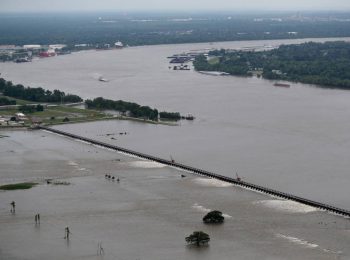
Bonnet Carre Spillway shut down as river falls below flood stage
The U.S. Army Corps of Engineers over the weekend completed the shutdown of the Bonnet Carre Spillway north of New Orleans, starting a process that will lead to the return of normal saltwater conditions in the Mississippi Sound. The return to normalcy in the Sound will take a minimum of two to four weeks,,, Recovery of aspects of the seafood industry is going to take years to recover, Graham said, citing the oysters, whose beds have been virtually destroyed by the fresh water.,, He said the shrimp industry, which, according to the Department of Marine Resources, over the past five years have yielded 2 million pounds in June, compared with about 500,000 pounds this June, should recover much quicker. >click to read< 08:25

The power to open Bonnet Carré spillway rests 200 miles from ‘struggling’ Gulf Coast
The U.S. Army Corps of Engineers opens the Bonnet Carré to prevent Mississippi River flooding in New Orleans, but Coast residents on less populated shores of South Mississippi and Louisiana feel the fallout. The fresh, polluted water floods Lake Pontchartrain and the Mississippi Sound. For the first time in history, the spillway has opened two years in a row — 2018 and 2019 — and two times in one year — 2019. Dolphins and oysters are dying. Shrimp are disappearing. Fish are covered in lesions. And the oxygen-starved Dead Zone, documented annually in the Gulf of Mexico, is expected this summer to be the size of Massachusetts, which is close to the 2017 record, the National Oceanic and Atmospheric Administration says. Video, photo’s >click to read<10:23
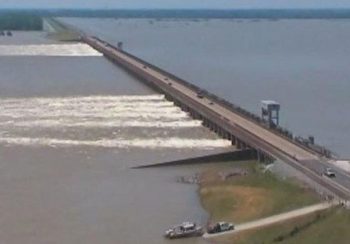
Morganza opening may drown the livelihoods of thousands of Gulf fishermen
Louisiana Lt. Governor Billy Nungesser is supporting a Gulf-wide coalition that wants FEMA to declare a state of emergency specific to Gulf seafood and its related industries. This comes as U.S. Army Corps of Engineers prepares to open the Morganza Spillway, sending fresh water into a fragile ecosystem that is home to a wide variety of Gulf seafood.,,, “The opening of the Morganza Spillway will cause severe damage to the Atchafalaya Basin, our nation’s largest estuary,” said Nungesser. “The opening of the Bonnet Carre Spillway earlier this year already has negatively impacted seafood in lakes Pontchartrain and Borgne, as well as fisheries in Mississippi. >click to read<18:31
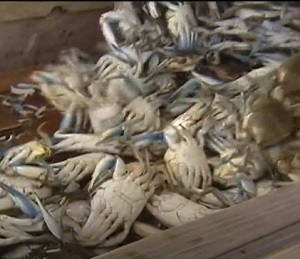
‘I’m out of work:’ Open Bonnet Carre Spillway hurts local fisherman
The Bonnet Carre Spillway is currently open to keep the Mississippi River from overflowing and damaging the levee system. But crab fisherman say there’s another side to the water diversion: The longer it stays open, the more damage it will do to the fishing industry. Fisherman along Lake St. Catherine say this time of the year their traps are usually brimming with crabs, but Saturday when Eyewitness News came to look, most of the traps had been pulled out of the water. >Video, click to read<15:16

Fishermen’s group calls Corps’ analysis of potential tailings dam failure at Pebble ‘woefully inadequate’
A new study commissioned by a Bristol Bay seafood marketing group paints a doomsday scenario if the bulk tailings dam at the proposed Pebble mine ever suffered a catastrophic breach, an outcome the U.S Army Corps of Engineers has called very remote and one the mine developer has taken steps to avoid. Billions of gallons of mud would smother valley bottoms, covering vast stretches of salmon habitat, according to an executive summary released Friday. Finely ground-up waste material from mining would travel downstream and spill into Bristol Bay more than 200 river miles from the mine site, threatening the valuable salmon fishery. >click to read<13:16






